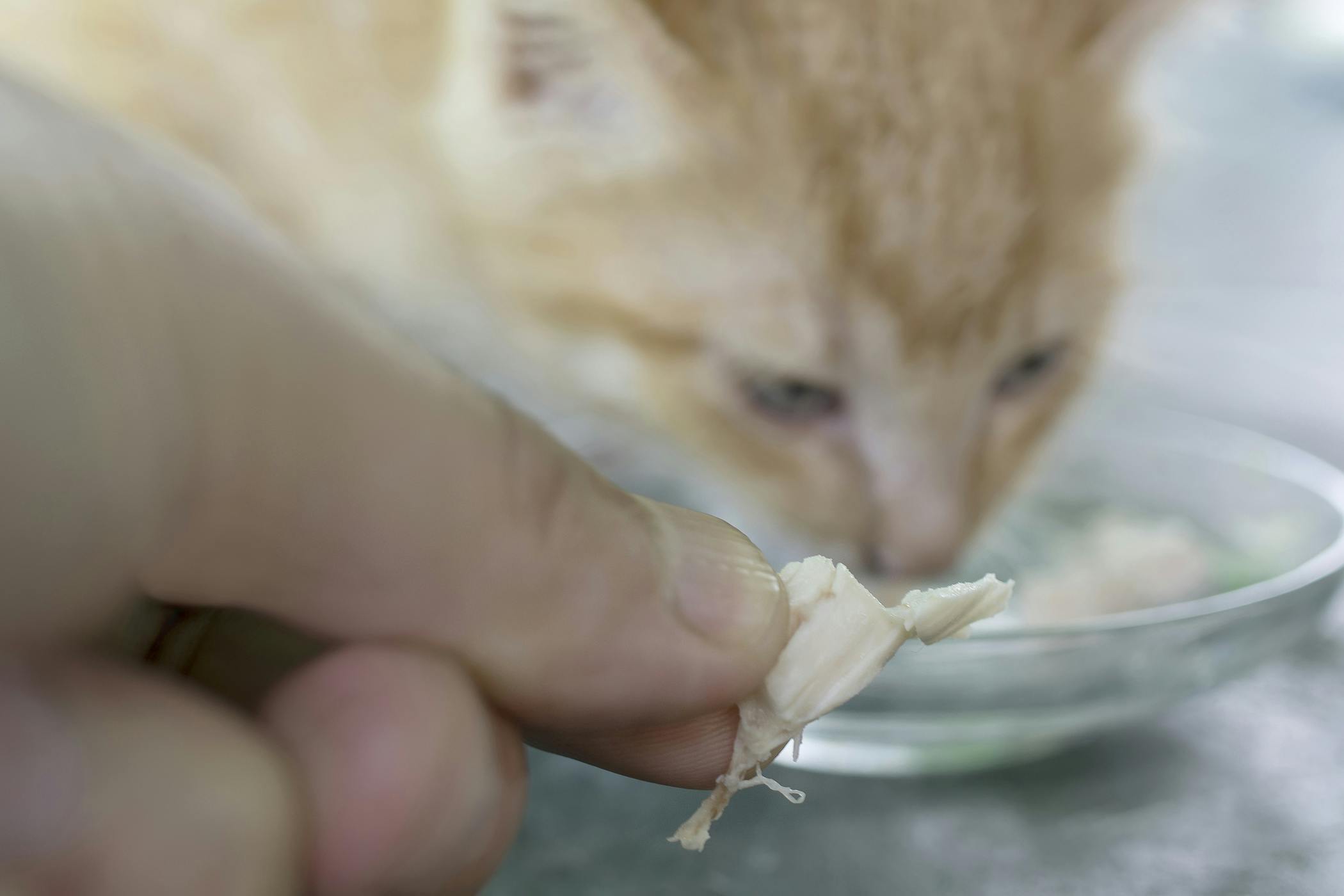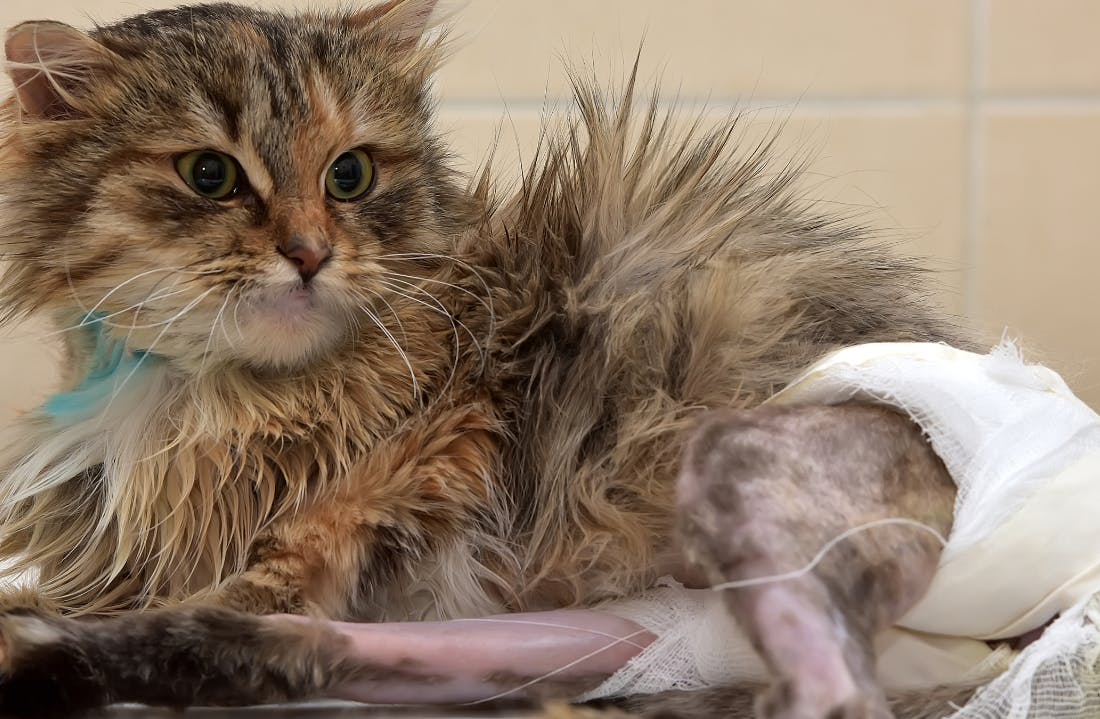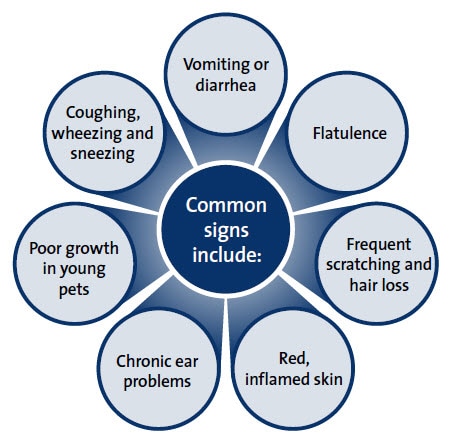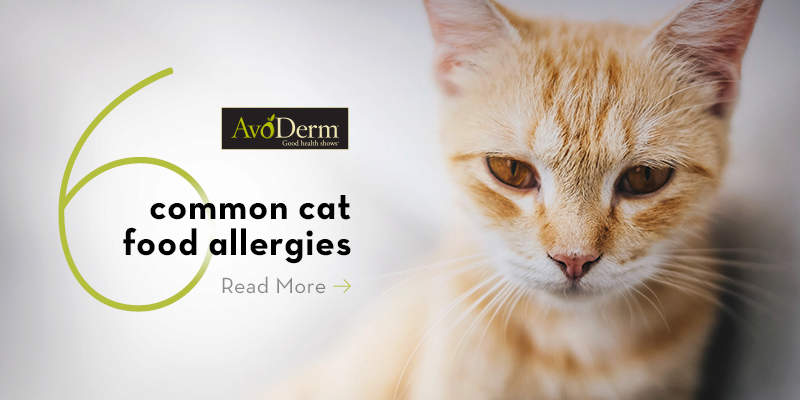This is why a short-haired cat likely invokes the same allergic response as a long-haired Persian cat. In some cases cats with food allergies develop gastrointestinal signs such as vomiting or diarrhea in addition to their skin issues.
What Every Pet Owner Should Know About Food Allergies Clinical Nutrition Service At Cummings School
These lumps form in reaction to the presence of an allergen in the cats system and will make life very uncomfortable for the.

How to tell if my cat is allergic to her food. These could be symptoms of a food allergy. Fur ball problems due to swallowing fur when scratchingover-grooming themselves. The most common food allergens for cats are chicken beef dairy egg and fish.
And like humans those allergic responses can range from itchy and irritating to severe and dangerous. We took her to a cat-only vet and she suspected food allergy not ear infection. If your cat has food allergies or food intolerance you may notice some of the following signs.
Cats most commonly develop food allergies between the ages of 2 and 6 and must be repeatedly exposed to the offending allergen for example by eating it every day to develop signs of a problem. If your cat has allergies some of the most common allergic reactions in cats cause the. We did the elimination diet and it worked.
This itching is caused by small pale fluid-filled lumps that will appear on your cats skin. The most common symptoms of a food allergy or food intolerance are digestive upset or skin irritation. Snoring caused by an inflamed throat.
As your cat tries to process and get rid of these irritating substances they may show a variety of symptoms. A cat food allergy is when your cat is allergic to a specific food and has an allergic reaction whenever she eats it. There are a variety of allergens that cause these symptoms.
Just like people cats and dogs can have food allergies too. Avoid dairy fish and beef as they account for 80 percent of all food allergies-and be sure not to feed her anything from the table. Pollen grass plants mold mildew and other organic substances.
The culprit behind your sneezing and wheezing and puffy eyes is a protein in a cats saliva and sebaceous glands hair follicle glands that produce sebum an oily secretion that waterproofs their coat and maintains skin health. In some cases this may lead to bald patches where your cat has tried to find relief. Cats can be allergic to one or more of these ingredients.
Cats with food allergies typically develop skin or gastrointestinal symptoms sometimes both. Paw chewing or swollen sensitive paws. These cats may develop itching around the rectum which leads to scooting.
Those signs can include vomiting diarrhea flatulence loss of. Scratching around the ears. If your cat vomits frequently has diarrhea irritated skin a poor coat condition or hair loss then she may have a food allergy.
If your cat appears to be scratching more than usual this may be a symptom of a food allergy. Skin problems - itching and redness bald areas or actual abrasions of the skin usually caused by the cat scratching themselves. Typical symptoms of cat food allergies include.
Some cats develop both skin and digestive symptoms. There are other illnesses that can cause these symptoms so make sure your cat. Many cats develop itchy skin or recurrent ear infections while others develop vomiting and diarrhea.
If your cat has a litter allergy certain behaviors will alert you that somethings not right. Meats like fish beef or dairy products are common sources of protein in cat food. A cat with allergies can often scratch or rub themselves so much that they develop bald patches so look out for these too.
Food allergies in pets can begin. Cats with food allergies may also have frequent bowel movements or strain when they are defecating. The itching that typically signals the presence of a food allergy is caused by the eruption of small pale fluid-filled lumps on a cats skin which form in response to the presence of an allergen a substance to which the animals system is abnormally sensitive.
Most feline foods also contain proteins present in grains and vegetables any of which can cause a food allergy. A food allergy is a hypersensitivity reaction usually to a type of protein. Does your cat have itchy skin diarrhea or vomit regularly.
What are the signs and symptoms of a cat allergy. Cats become allergic to food when their immune system misidentifies a foodborne protein as a hostile invader and attacks it. I took a look at the label of a typical dry cat food and found five of these ingredients salmon corn gluten meal poultry by-product meal whole grain corn and tuna meal.
Excessive licking or grooming. The tell-tale sign of a food allergy is the constant itching you may notice in your cat. You may notice skin redness and swelling around the.
One way to determine if food allergies are to blame is to switch her to a hypoallergenic diet-incorporating proteins and carbohydrates that are new to her-for twelve weeks to see if the symptoms clear up. She only eats novel proteins - mostly Natures Variety Instinct rabbit wet food some RadCat raw venison and wild caught Alaskan salmon that I grill or poach for her. I prepare about a 34 pound for her and put it in an.

3 Ways To Tell If Your Cat Has A Food Intolerance Wikihow Pet

Feline Allergies Types Symptoms Diagnosis And Treatment Petcoach

Dry Food Allergy In Cats Symptoms Causes Diagnosis Treatment Recovery Management Cost

Cat Diseases Allergy And Food Intolerance Hill S Pet

Chicken Allergy In Cats Symptoms Causes Diagnosis Treatment Recovery Management Cost

The 6 Most Common Food Allergies In Cats Avoderm

3 Ways To Tell If Your Cat Has A Food Intolerance Wikihow Pet
Feline Allergies Environmental Allergies And Food Alergies In Cats
